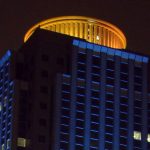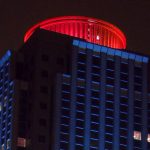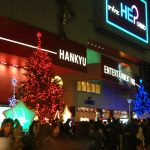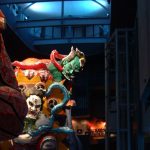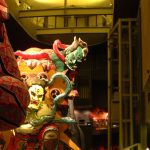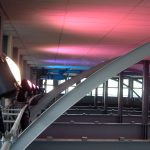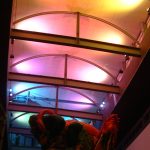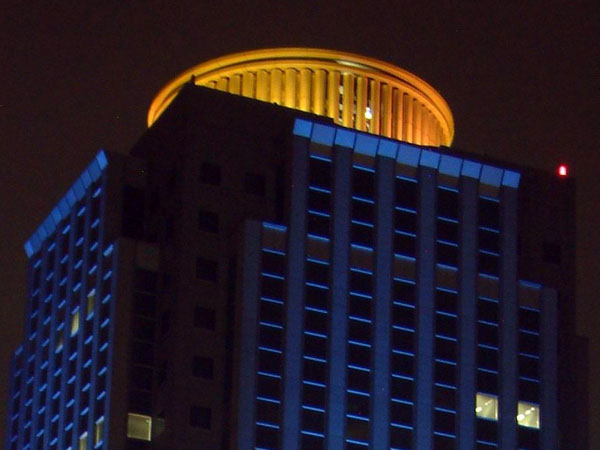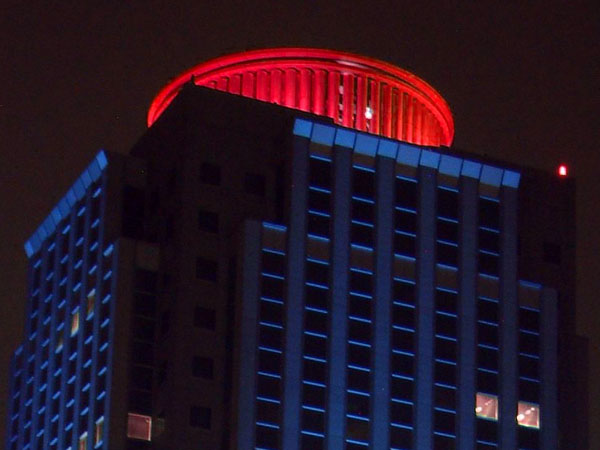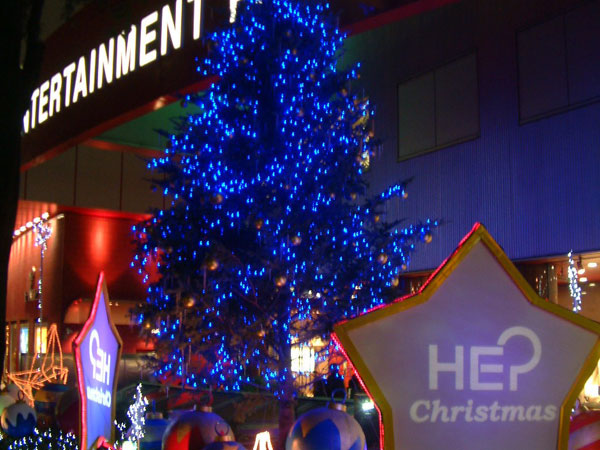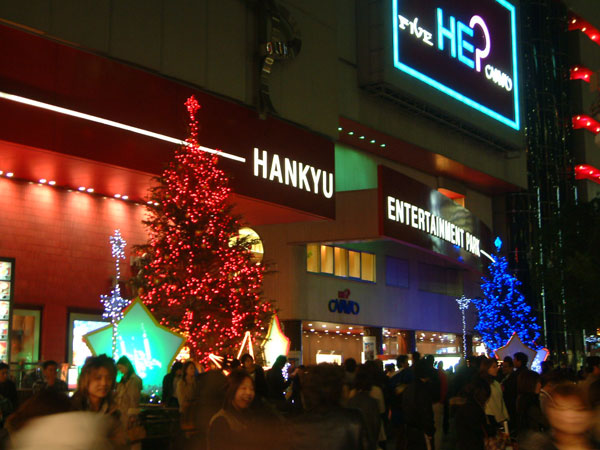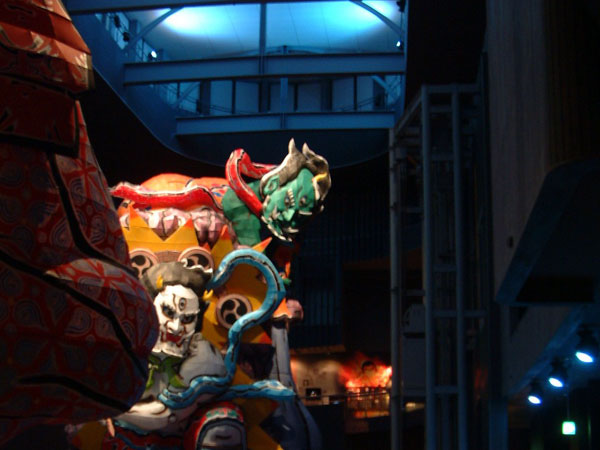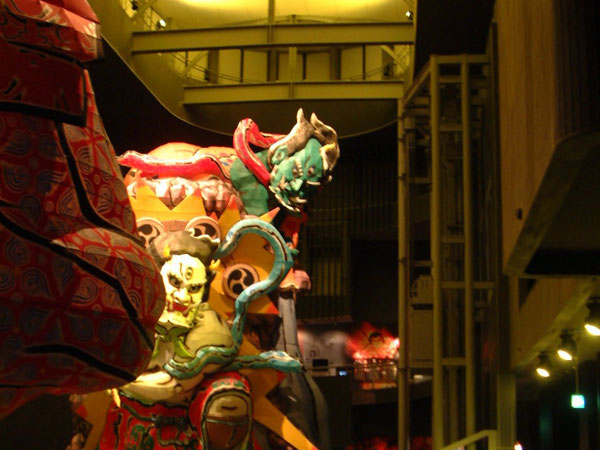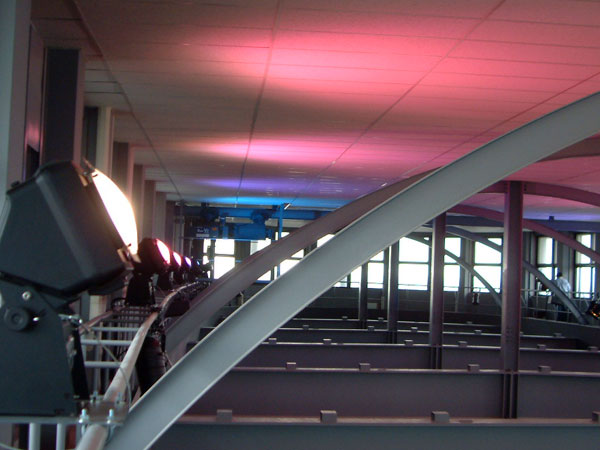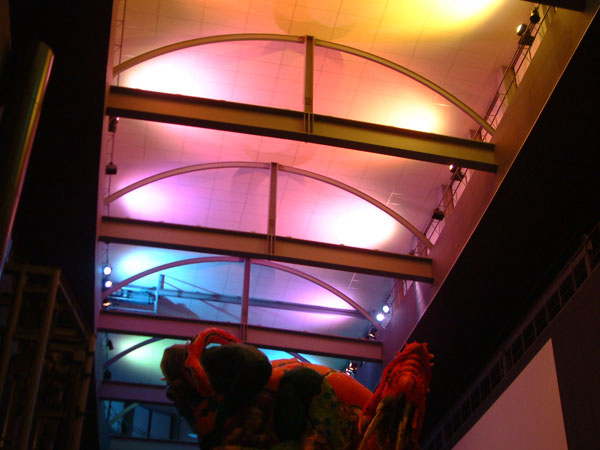TACHI-NEPUTA MUSEUM
In the very colourful Japanese iconography, Neputa certainly represents one of the most traditional and symbolic figures. In some Japanese cities – merely for the sake of comparison – the Festival dedicated to Neputa is as important as the carnival in Rio for Brazil.
The Tachi-Neputa Museum was inaugurated in Aomori (northern Japan) in April 2004, as a tribute to this popular multifarious character, half-dragon and half-devil. The outstanding feature in the museum is the statue of Neputa, which stands 22 metres tall: the equivalent of the seven floors surrounding it, which contains objects and representations illustrating its legend in Japanese traditions, including complete photographic documentation of the festival over the years.
For the lighting design by Masanori Ichigaya (producer), Hiroaki Tashiro and Hideki Ohata of Bist Entertainment, 15 CP Color and 4 Stage Zoom 1200 by Clay Paky have been used to illuminate the hall, in particular the ceiling and the terraces, which surround the statue inside an ideal arena.
The Lighting Designers explain how the project was interpreted: ”We used the three-colour mixing system of the CP Color and Stage Zoom appliances to simulate the sequence of the changing seasons, where each was characterized by different colours and images. The ceiling CP Color and those placed at the base of the statue have been programmed so that the change of colour took place simultaneously, in order to create a chromatic involvement at all levels. On the base, we used the CP Color with separate heads, an ingenious idea by Clay Paky, which allowed us to optimize the available space, concealing the bases of the projectors in the false ceilings”.
HEP
HEP, which stands for Hankyu Entertainment Park, is a multi-functional structure which is very common in some areas of Japan, with venues for entertainment, restaurants, shops and above all, a “live house”.
During the Christmas celebrations, the HEP centre in Osaka attracted a considerable number of visitors thanks to the lighting architectures which had been installed at the entrance to the centre: Clay Paky Mini Scans projected graphic effects showing Christmas themes in back-projection on to white star-shaped screens.
The management of the Osaka HEP centre are very satisfied with the use of these lighting appliances, which attract many visitors, giving a colourful and creative connotation to the venue. In agreement with the lighting designer Masanori Ichigaya, each year they change theme: last year CP Color colour changers were used, which created an evocative “rainbow effect” on the background trees, ideally accompanying visitors towards the entrance of the structure.
EBIS PRIME SQUARE
Ebis, a famous skyscraper in Tokyo, over 100 metres high, houses a business centre and stores. The crown on the top of the skyscraper is the symbol of the building and is recognised all over Japan. Recently, based on a design by the Lighting Designer Masanori Ichigaya, this crown was coloured by projectors which are turned on during festivities.
Mr. Ichigaya explains that he used the CP Color 150 with a 150 watt lamp and for outdoor use (IP65), so that they could resist the rain and atmospheric events without any problem, considering that at that height and in those lighting conditions it is very difficult to foresee any type of protection for standard appliances. The CP Color appliances were programmed simultaneously, so that they bounced the colour back from one to another, creating an effect of continuous circular movement, which is fascinating and highly visible in an area of many square km.
SHINJUKU SOUTHERN LIGHTS
In one of the busiest areas of Tokyo, full of restaurants, stores and commercial businesses, 8 Clay Paky CP Color liven up the bridge over the railway. The projectors have been set in special parallelepiped structures, with a window for the light beam to shine through.
The lighting design is part of a project by the municipality of Tokyo, aimed at making some areas of the city more lively during the Christmas celebrations.
The colours accompany the inhabitants as they walk over the bridge, with the change in colour which corresponds ideally to the passage from one point of the bridge to another.
The lighting designs mentioned here are by BIST Entertainment of Tokyo (www.bist.co.jp).
The official Clay Paky distributor for Japan is JEMCO run by Mr. Nobuaki Sakamoto (http://www.jemco-jp.com/)
